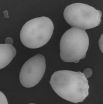Smoking around your kindergartner could raise their blood pressure
American Heart Association rapid access journal report
2011-01-11
(Press-News.org) If you smoke around your children, they could have high blood pressure or be headed in an unhealthy direction before learning their ABC's, according to research reported in Circulation: Journal of the American Heart Association.
The study is the first to show that breathing tobacco smoke increases the blood pressure of children as young as 4 or 5 years old.
"The prevention of adult diseases like stroke or heart attack begins during childhood," said Giacomo D. Simonetti, M.D., first author of the study at the University of Heidelberg in Germany and currently assistant professor of pediatrics at the Children's Hospital of the University of Berne in Switzerland. "Parental smoking is not only negative for children's lung function, but poses a risk for their future cardiovascular health."
In an extension of a standard school health exam, 4,236 kindergarten boys and girls (average age 5.7) in the German district that includes Heidelberg had their blood pressure measured. Of parents reporting they smoked, 28.5 percent were fathers, 20.7 percent mothers and 11.9 percent were both parents.
Children with a smoking parent were 21 percent more likely to have systolic blood pressure (the top number in a reading, measured as the heart contracts) in the highest 15 percent, even after adjusting for other heart disease risk factors, such as birth weight, body mass index, and hypertension in the parents.
"Passive smoking increased the risk of having blood pressure at the upper end of normal, and some of these children already had high blood pressure," Simonetti said.
After correcting for other risk factors — having parents with high blood pressure, being born prematurely or at a low birth weight, being overweight or obese — blood pressures were significantly higher in the children of smoking parents.
The impact was greater for systolic blood pressure (average increase 1.0 mm Hg) than diastolic blood pressure (average increase 0.5 mm Hg), the lower number in a reading measured when the heart rests between beats.
"Smoking adds to other risk factors," Simonetti said. "Average blood pressure increased in proportion to the cumulative number of risk factors present."
Smoking by mothers had a larger impact than fathers smoking, probably because more of their smoking was done in the home while fathers smoked more at their workplaces, researchers said.
Smoke exposure is likely to have a similar impact on blood pressure in children in the United States, the researchers said.
"Childhood blood pressure consistently tracks into adult life," Simonetti said. "Removing any avoidable risk factors as soon as possible will help reduce the risk for heart disease later on and improve the long-term health of children."
The study findings suggest that encouraging strictly smoke-free environments, specifically at home, may help preserve cardiovascular health not only in adults but also in children, researchers said.
INFORMATION:
Co-authors are: Rainer Schwertz, M.D.; Martin Klett, M.D.; Georg F. Hoffman, M.D.; Franz Schaefer, M.D.; and Elke Wühl, M.D. Author disclosures are on the manuscript.
The Manfred-Lautenschläger Stiftung, Reimann-Dubbers-Stiftung, Dietmar-Hopp-Stiftung and the Swiss Society of Hypertension AstraZeneca scholarship funded the study.
Statements and conclusions of study authors published in American Heart Association scientific journals are solely those of the study authors and do not necessarily reflect the association's policy or position. The association makes no representation or guarantee as to their accuracy or reliability. The association receives funding primarily from individuals; foundations and corporations (including pharmaceutical, device manufacturers and other companies) also make donations and fund specific association programs and events. The association has strict policies to prevent these relationships from influencing the science content. Revenues from pharmaceutical and device corporations are available at www.americanheart.org/corporatefunding.
Editor's Note: The American Heart Association supports adequate funding for state tobacco cessation and prevention programs, robust coverage in private and public health plans for tobacco cessation, clean indoor air laws and excise taxes. www.heart.org/tobaccocontrol.
Additional resources:
Smoking and Cardiovascular Disease
Downloadable stock footage, animation and our image gallery are located at www.heart.org/news under Multimedia.
ELSE PRESS RELEASES FROM THIS DATE:
2011-01-11
Teenagers who consume a lot of added sugars in soft drinks and foods may have poor cholesterol profiles — which may possibly lead to heart disease in adulthood, according to first-of-its-kind research reported in Circulation: Journal of the American Heart Association.
"Added sugars" are any caloric sweeteners added to foods or beverages by the manufacturer during processing or the consumer.
The National Health and Nutrition Survey (NHANES) of 2,157 teenagers (ages 12 to 18) found the average daily consumption of added sugars was 119 grams (28.3 tsp or 476 calories), ...
2011-01-11
According to an Emory University study, teenagers with high sugar diets may be in store for heart problems as adults.
A study published in the Jan. 10 online issue of the journal Circulation finds teens who consume elevated amounts of added sugars in drinks and foods are more likely to have poor cholesterol and triglyceride profiles now which may lead to heart disease later in life.
The study also finds that overweight or obese teens with the highest levels of added sugar intake had increased signs of insulin resistance, often a precursor to diabetes.
According to ...
2011-01-11
Melt off from small mountain glaciers and ice caps will contribute about 12 centimetres to world sea-level increases by 2100, according to UBC research published this week in Nature Geoscience.
The largest contributors to projected global sea-level increases are glaciers in Arctic Canada, Alaska and landmass bound glaciers in the Antarctic. Glaciers in the European Alps, New Zealand, the Caucasus, Western Canada and the Western United Sates--though small absolute contributors to global sea-level increases--are projected to lose more than 50 per cent of their current ice ...
2011-01-11
A Spanish study has challenged the long-held belief that people in the Mediterranean all enjoy more healthy diets and lifestyles, after discovering alarmingly high cardiovascular risk factors similar to those found in the UK and USA.
Research published in the January issue of IJCP, the International Journal of Clinical Practice, also found strong links between low levels of education and increased risk.
"Cardiovascular diseases account for 33 per cent of deaths in Spain, making it the main cause of mortality in the country" says Dr Ricardo Gómez-Huelgas from the Internal ...
2011-01-11
A strange, glowing green cloud of gas that has mystified astronomers since its discovery in 2007 has been studied by Hubble. The cloud of gas is lit up by the bright light of a nearby quasar, and shows signs of ongoing star formation.
One of the strangest space objects ever seen is being scrutinised by the penetrating vision of the NASA/ESA Hubble Space Telescope. A mysterious, glowing green blob of gas is floating in space near a spiral galaxy. Hubble uncovered delicate filaments of gas and a pocket of young star clusters in the giant object, which is the size of the ...
2011-01-11
Hope for new ways of treating devastating neurodegenerative disorders such as Huntington's disease has been raised by a trans-Atlantic team of researchers thanks to the use of cutting-edge genetic techniques.
Led by the University of Leicester, scientists from the University of Lisbon (led by Dr Tiago Outeiro) and University of California at San Francisco (led by Dr Paul Muchowski) collaborated to generate novel approaches for tackling the diseases. Their work, funded by the Medical Research Council, is published in The Journal of Biological Chemistry.
At Leicester, ...
2011-01-11
New research published today, shows how light can be used to control the electrical properties of graphene, paving the way for graphene-based optoelectronic devices and highly sensitive sensors.
This year's Nobel Prize for Physics was awarded for research into graphene, recognising its potential for many applications in modern life, from high-speed electronics to touchscreen technology. The UK's National Physical Laboratory, along with a team of international scientists, have further developed our understanding of graphene by showing that when this remarkable material ...
2011-01-11
A team of researchers has demonstrated that the brain predicts consequences of our eye movements on what we see next. The findings, which appear in the journal Nature Neuroscience, have implications for understanding human attention and applications to robotics.
The study was conducted by researchers at University Paris Descartes, New York University's Department of Psychology, and Ludwig-Maximilian University in Munich.
Our eyes jump rapidly about three times each second to capture new visual information, and with each jump a new view of the world falls onto the retina—a ...
2011-01-11
The federal peer review system, by which research proposals are judged worthy for funding, may be "over stretched" and "susceptible to error," said Elmer Yglesias, a researcher at the Science and Technology Policy Institute and author of "Improving Peer Review in the Federal Government," published in the current issue of TECHNOLOGY & INNOVATION, Proceedings of the National Academy of Inventors ™, (www.academyofinventors.org) now available on-line at: http://www.cognizantcommunication.com/filecabinet/Technology/techinnovation.html
According to Yglesias, the federal ...
2011-01-11
The number and scale of forest fires has increased dramatically in recent decades. Who can forget last summer's television images of blazing infernos devouring miles and miles of forest in Russia, Australia and California? In Germany, too, several regions are under threat precipitated by climate change – Brandenburg, for example, is one of the areas of Europe that are most at risk.
Often, fires can only be contained from the air. In order to fight them in a targeted way, firefighting planes need to be given precise information on where the flames are at their worst. Infrared ...
LAST 30 PRESS RELEASES:
[Press-News.org] Smoking around your kindergartner could raise their blood pressure
American Heart Association rapid access journal report


